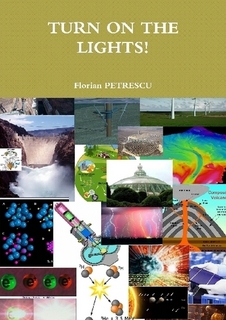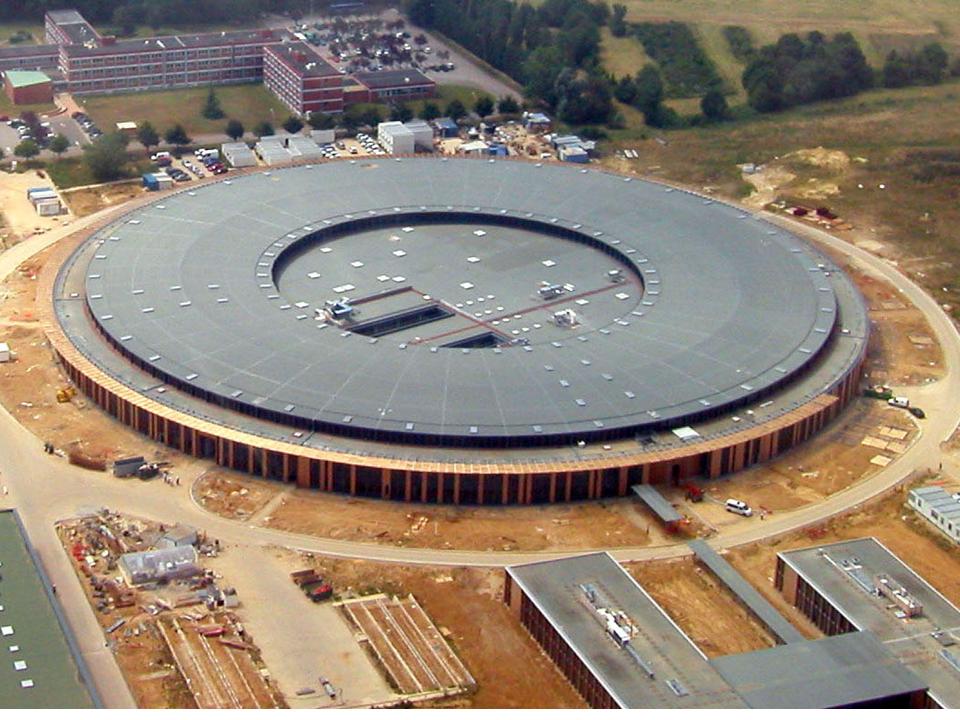Particle Annihilation - A Source of Renewable Energy?
Florian Ion Petrescu, an engineering PhD and senior lecturer at the Bucharest Polytechnic University in Rumania, has written about a variety of subjects including physics, mechanical engineering, and the development of flight. His books are available through LuLu publishers at http://www.lulu.com/spotlight/petrescuflorian

One of those books, TURN ON THE LIGHTS! describes how the process of particle annihilation, the destructive interference between a particle and its anti-particle, could be used to obtain comparatively cheap and perfectly renewable energy.
Although using the energy of sub-atomic particles, the process would neither necessitate nor create radioactive particles. It would also be much cheaper and simpler to realize than atomic fusion and present-day atomic fission reactors.
Here is a summary, slightly edited, from a communication printed in the January/February 2012 issue of Infinite Energy Magazine.
Obtaining Energy by Annihilation of an Electron with a Positron
by Florian Ion Petrescu Bucharest, Romania
We can obtain renewable, clean, safe, cheap energy by annihilation, for example, of an electron with an anti-electron (positron). An electron and positron are obtained by extracting them from atoms; the extraction consumes a negligible amount of energy. Then, the two particles are brought near one another (collision).
The phenomenon of annihilation occurs when particle rest mass is converted totally into energy (gamma photons). Gamma photons occur as much as needed to retrieve the total energy of the electron and positron (rest energy and kinetic energy); usually one can get two or three gamma particles when we have a low energy annihilation, i.e. two anti-particles with lower energy, each with a little beyond rest mass (the particles are accelerated at a low-speed motion), but we can get more particles when we have a high energy annihilation (i.e. when the particle energy is high and the particles were strongly accelerated before the collision).
The rest energy of an electron-positron pair slightly exceeds 1 MeV which is an extremely large amount of energy from a small particle, comparable with that achieved by the merger of two much larger particles, having a rest mass about 2,000 times higher. Hence the first great advantage of the new method proposed: namely, that the most complex physical process that has so far been tried to obtain particle energy (hot or cold fusion) draws only about a thousandth part of the rest mass of the particle, resulting in the fusion of two particles. Practically, only the energy gap between two particles is freed when their energy is united. The proposed method would be able to extract virtually all the internal energy of the particles that are annihilated.
We started with the electron positron pair because these small particles are more easily extracted from the atoms. The atoms are then immediately regenerated naturally, which makes energy from the annihilation of particles perfectly renewable. A future step will be to test the annihilation between a proton and an anti-proton, because their mass is about 1,800 times higher than that of the electron and positron, resulting in their annihilation energy being about 1,000 times higher. Instead of 1 MeV, 1 GeV is considered as the really obtainable energy, the energy donated by the proton of the hydrogen ion. The energy of an antiproton is considered to be donated by us almost entirely, for now, because to obtain an anti-proton we must accelerate some particles at very high-energy and then collide them. So the real comparison must be made between the deuteron fusion and annihilation processes of a hydrogen ion (proton) with an anti-proton. It will be a difference of energy of about 1,000 times higher per pair of particles used, in favor of the annihilation process.
Practically this realizes the dream of extracting all of the energy from matter.
Another great advantage of this method is that there are no radioactive substances nor radioactive wastes from the process. The process produces only gamma photons (i.e. energy) and possibly other energetic mini particles. The process does not pose any threat to humans and the environment. The energy produced is clean.

Modern industrial-scale synchrotrons can be quite large (here Soleil, near Paris, soon after construction)
The technology required, however, is much simpler than that for nuclear fission or fusion, it is also cheaper and easier to maintain. A great amount of energy is released by the annihilation process (virtually unlimited), and it will be cheap, clean, safe, as well as immediately renewable (sustainable), while using technology that is currently available.
We can extract the energy of the rest mass of an electron. For a pair of an electron and a positron, this energy is about 1 MeV. "Synchrotron radiation" as produced in a synchrotron light source is a deliberately produced source of radiation. Electrons are accelerated to high speeds in several stages to achieve a final energy (typically in the GeV range).
We need two synchrotrons, a synchrotron for electrons and another that accelerates positrons. The particles must be collided, after they are accelerated to an optimal energy level. All the energy is collected at the exit of the synchrotrons, after the collision of the opposite particles. We will recover the accelerating energy, and in addition we also collect the rest energy of the electrons and positrons.
At a rate of 1019 electrons/s we obtain an energy of about 7 GWh/year, even if only half of the possible collisions are produced. This high rate can be obtained with 60 pulses per minute and 1019 electrons per pulse, or with 600 pulses per minute and 1018 electrons per pulse. If we increase the flow rate 1,000 times, we can have a power of about 7 TWh/year. This type of energy can be a complement to fusion energy, and together they must replace the energy obtained by burning hydrocarbons.
Advantages of the annihilation of an electron with a positron, compared with nuclear fission reactors, are the absence of radioactive waste, and a much lessened risk (no explosion or chain reaction). Energy from the rest mass of the electron is more easily controlled compared with the fusion reaction, cold or hot.
There will be no need for enriched radioactive fuel (as in nuclear fission), for deuterium, lithium and accelerated neutrons (like in cold fusion), or of extremely high temperatures and pressures (as in hot fusion).
Comments
February 17, 2012 1:26 PM | Posted by: FIDEL TREJO
It sounds good, the problem, at this moment, is the cost to produce antimatter (positron) in enough quantity. But, certainly, is a very good option for those hugh investments that didn't gave good results on hot fussion or fission.Welcomed!
May 16, 2012 5:49 PM | Posted by: linoavac
new concept of VORTEX pratical
http://www.youtube.com/watch?v=LDtsuofgRJ0